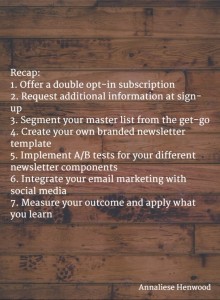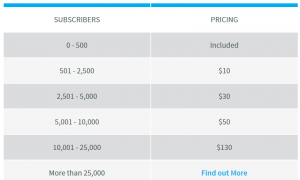The number of technology ‘solutions’ for business is mind-boggling. How are you supposed to keep up? Should you even try? Wouldn’t it be better to simply find a solution when there’s a problem, instead of worrying about being so savvy?
The old-fashioned model of doing business—the quality of product, the level of brand visibility, the voracity of sales, the quality of customer service—is a gold standard to which businesses hold themselves—and it works.
Unfortunately, competition is fierce. If there’s a new app, a new device, your competitor has it. But the point is not to pick up new technology willy-nilly. A smart strategy determines who benefits the most from new technology. Solutions are there to reinforce the gold standard. Hopefully, solutions ensure your business is faster and better at setting the standard, to the point where your standard is platinum.
In this article, I’m not saying, ‘Here are the new technology solutions you should implement’. There are plenty of articles out there making recommendations. Rather, I’m talking about strategy for integrating new technology.
Integrating technology solutions
Here’s a hypothetical example: taxi cab company, X, wants to compete with Uber. X’s CTO analyzes Uber’s business model and determines that GPS tracking plays a big role in Uber’s app. The CTO thinks, if X can implement GPS tracking in fleet management, it will put X closer to competing with Uber. X’s CEO understands she can’t simply throw GPS into the mix without doing the following:
- Announce the transition in advance – this sets accurate expectations
- Designate a transition team – they facilitate continuous communication
- Set up low-stress training – this will help employees prepare for technicalities and get used to the change without unsettling them
- Prepare for problems – this involves brainstorming what could go wrong and how to deal with it
- Keep up with trainings – this will ensure a smooth transition
Putting a strategy in place will help X smoothly integrate new technology into the business—it will set the company up for success. But, will GPS do for X what it does for Uber? This comes down to determining if the technology truly fits the business model.
Optimizing for your concept
For the hypothetical cab company, GPS won’t do the same for it as the technology does for Uber. Uber’s app is client-facing. GPS also lets Uber know accurate internal details about drivers and their trips, similar to what GPS fleet management does for trucking.
For the cab company X, unless they develop an app similar to Uber’s, GPS will be an internal management tool. Of course, if they develop an app like Uber’s, they may face copyright infringement lawsuits.
What’s your concept? Let’s take, say, the travel business. If you’re in the travel business, like the hypothetical cab company, you face competition from a sharing economy startup. In this case, it’s AirBnB. The competition is stiff. AirBnB was valued at an insane $ 25.5 billion at the end of 2015. How can a travel business hope to find a solution towards competing?
One option for the hypothetical travel site would be to partner with a site like Hipmunk. This basically does for companies what AirBnB does for homeowners. It puts them on an internet platform and app, from which they earn a commission. The platform lets them compete directly with AirBnB, because Hipmunk lists AirBnB rentals, too. The platform is all about harnessing advanced data analytics to make things easier for the traveler.
Taking a step back, what I’m really talking about here is finding ways to get your brand out there via internet and application in a way that maximizes for your concept. Where’s your competition? What platforms are they using to get themselves out there? Is there anything they haven’t thought of yet?
Part of why sharing economy sites such as Uber and AirBnB have such high valuations is because they’re streamlining e-commerce and m-commerce. They’re making it easier for people to connect to services through websites and apps.
Using data
Whatever your concept, decisions are easier if you access analytics. Google analytics can tell you where your site traffic is coming from, and further, which marketing efforts you should step up. To further drill down those marketing efforts, you may want to further analyze the data users generate from their web activity.
Hadoop is among the open source software solutions that can help you navigate through data. Some enterprises choose to dump the data into a big data lake in Hadoop. Then, they sift through the data based on what they want to find and cull. It’s an organic customization process, but it does require analysts skilled in data science.
Other analysts tell Hadoop what datasets they want to analyze beforehand. They use a stack—a group of programs that work with Hadoop, to export data into insights you can use.
If you’re wanting to optimize for e-commerce, big data can tell you a lot about who your customers are, what they do, and what they’re looking for. It can also help you deal with inventory at a brick-and-mortar location.
Hadoop is able to analyze batch cycle iteratively, giving you instant information on what’s selling faster, or slower, than normal. Then, you can telescope inventory needs. Instead of reacting, you’re thinking ahead and on top of the situation.
Analyzing KPIs
Your Key Performance Indicators will tell you how your implementation of a new technology solution is working. Going back to the cab company, X, that wants to adopt GPS, they want to generate more revenue, and profits, by making their business more efficient. It will be easy to tell if GPS helps achieve this. All X has to do is compare pre-GPS revenue and profits with post-GPS revenue and profits.
Other technology implementations a business makes might not be so easy to quantify. Is it worthwhile to adapt your business to new technology if you can’t hold the decision to a metric standard? Probably not. But KPIs are what you want them to be—that is, it’s about what you’re trying to achieve. You may notice employee engagement is low. How do you know how much that’s costing you?
Finding out would involve an in-depth analysis of peak-performance employees and their output, vs that of low performers. What’s the final impact on the bottom line? Is there a technology that could influence engagement?
Author Dion Hinchcliffe cites TELUS’ 50% improvement of employee engagement through social media. But he points out that a company will only benefit from a technology “if they are ready to make the fundamental changes required to take inherent advantage of the unique power that a new technology makes possible.”
Networking technologies will let your employees be heard, but if you don’t open up to what they’re saying, if you don’t scrutinize your business processes and culture, it won’t positively impact engagement.
The possibility of technology
Businesses that benefit from new technology make their model malleable to what that technology can achieve. In other words, you’ve got to be all in with the investment, the gamble, of a new solution. If you’re all in, you’re evolving.
The possibility of technology is to expand your business just as the technology marketplace is expanding. Start with a mindset that embraces change. Then take advantage of technologies to facilitate it.
Business & Finance Articles on Business 2 Community(70)
Report Post




